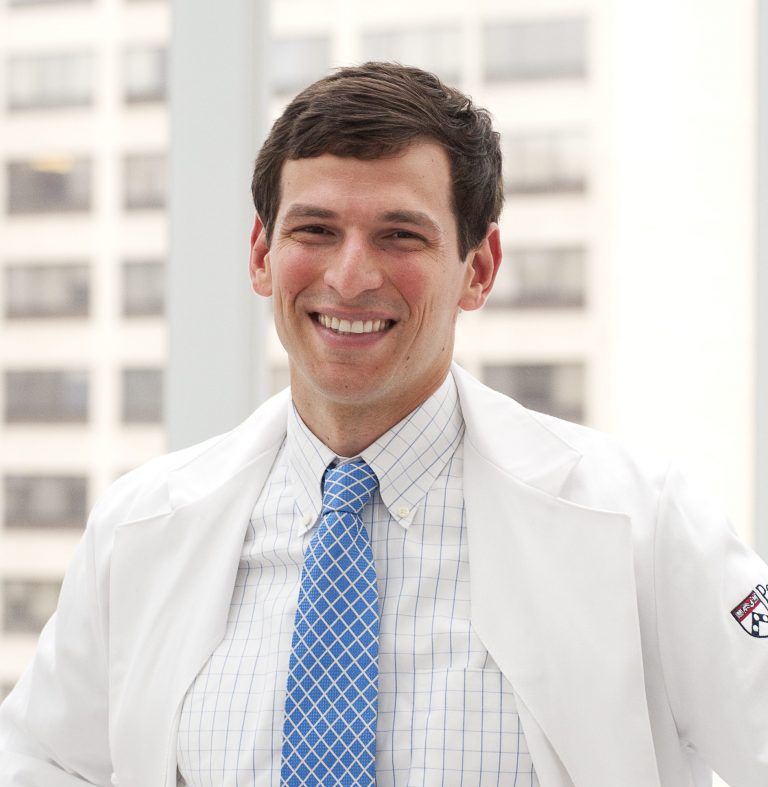ASCO Guest Speaker: 'Let's Look at Old Drugs'

Ten of thousands of oncologists flock to the annual meeting of the American Society of Clinical Oncology (ASCO) in Chicago every year to hear about new drugs. Even preliminary or incremental developments can excite the crowd.
But this year, the massive gathering is being held online because of the COVID-19 pandemic, and the featured guest speaker in the opening session morning didn’t talk up new therapies and instead urged researchers to consider repurposing old ones.
“Solutions can be hiding in plain sight,” David C. Fajgenbaum, M.D., MBA, M.Sc., FCPP, told the online audience. “Let’s look at old drugs for potential new uses.”
Fajgenbaum, an assistant professor of medicine at the University of Pennsylvania, has become well known as a Castleman disease patient, researcher and advocate. But he has recently set up the Center for Cytokine Storm Treatment and Laboratory to track off-label use of drugs to treat COVID-19. So far, he said his group has found approximately 150 drugs have been tried in the 150,000 COVID-19 patients.
Fajgenbaum came down with idiopathic multicentric Castleman disease (iMCD) when he was a third-year medical school student. About 5,000 cases of Castleman disease, an immune disorder, are diagnosed in the U.S. each year, and iMCD is just one of type of the disease. In an address to the ASCO meeting that combined personal observations and anecdotes with clinical information about his disease, Fajgenbaum gave a moving account of his up-and-down battle with the rare, potentially lethal disease.
The only FDA-approved drug for iMCD, siltuximab (Slyvant), an IL-6 inhibitor, didn’t keep his disease in check, so Fajgenbaum said he was treated with nonspecific chemotherapy.
Fajgenbaum, whose memoir, Chasing My Cure: A Doctor’s Race to Turn Hope Into Action was published last year, had graduated from medical school and was engaged to be married when he relapsed again. “I knew if I wanted to make it our wedding day I had to find drug to keep me in remission, so I dove head first into research,” he told the ASCO online attendees.
After researching his own cytokine panels from before he relapsed, Fajgenbaum noticed some telltale spikes that led him to believe that the best strategy for keeping his iMCD in check was blocking the mammalian target of rapamycin (mTOR) pathway that activates T cells and vascular endothelial growth factor (VEGF) production. And he settled sirolimus (Rapamune), an immunosuppressant used to prevent organ rejection in transplant patients, as the best mTOR blocker.
“The drug that is keeping me alive was sitting in my nearby CVS in the three years that I was in and out of the hospital because no one had thought to use it,” said Fajgenbaum. He urged the oncologist to keep systematic track of off-label use.
Fajgenbaum and Frits van Rhee, M.D., Ph.D., a professor at the University of Arkansas for Medical Sciences, co-founded the Castleman Disease Collaborative Network in 2012, which centralized and greatly increased fundraising for and research into Castleman disease. Fajgenbaum said a registry kept by the network shows that about 40 drugs have been used off-label to treat the Castleman disease.
“It takes an army,” Fajgenbaurm said, speaking about being an advocate and a connector. “You have to bring everyone together, utilize all samples, all data, within a given disease but also across overlapping and even unrelated conditions.”
In Urothelial Cancer, Most Subtypes Benefit From Maintenance Bavencio (Avelumab), Faltas Says
June 28th 2021A presentation at the 2021 American Society of Clinical Oncology meeting earlier this month reviewed recent findings from trials investigating the treatment of urothelial cancer.
Read More
Kathi Mooney of Huntsman Cancer Institute Speaks on Hospital-at-Home Programs
June 3rd 2020Kathi Mooney, Ph.D., RN, FAAN, interim senior director of population sciences at the Huntsman Cancer Institute in Salt Lake City, discusses hospital-at-home programs and how they are common in countries with single-payer systems and include patients with conditions ranging from cellulitis to heart failure. The benefits include the familiarity of home surroundings, avoidance of hospital-acquired infection, and less de-conditioning from being in a hospital bed.
Listen